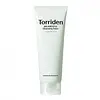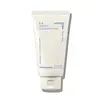What's inside
What's inside
 Key Ingredients
Key Ingredients

 Benefits
Benefits

 Concerns
Concerns

 Ingredients Side-by-side
Ingredients Side-by-side

Water
Skin ConditioningGlycerin
HumectantStearic Acid
CleansingLauric Acid
CleansingPotassium Hydroxide
BufferingPotassium Cocoyl Glycinate
Dipropylene Glycol
HumectantPotassium Cocoate
EmulsifyingGlyceryl Stearate Se
EmulsifyingLauryl Glucoside
CleansingSalicylic Acid
MaskingCentella Asiatica Extract
CleansingMadecassoside
AntioxidantAsiaticoside
AntioxidantAsiatic Acid
Skin ConditioningMadecassic Acid
Skin ConditioningPanthenol
Skin ConditioningGluconolactone
Skin ConditioningAllantoin
Skin ConditioningTocopherol
AntioxidantAlthaea Rosea Flower Extract
Skin ConditioningNymphaea Caerulea Flower Extract
Skin ConditioningLactobacillus Ferment
Skin ConditioningSwertia Japonica Extract
Skin ConditioningPentylene Glycol
Skin ConditioningButylene Glycol
HumectantSodium Cocoyl Isethionate
CleansingSodium Isethionate
CleansingCaprylyl Glycol
EmollientDisodium EDTA
Dextrin
AbsorbentSodium Benzoate
MaskingCoconut Acid
CleansingEthylhexylglycerin
Skin ConditioningPolyquaternium-7
1,2-Hexanediol
Skin ConditioningRosmarinus Officinalis Leaf Oil
MaskingDecyl Glucoside
CleansingGardenia Florida Fruit Extract
Skin ConditioningCarthamus Tinctorius Flower Extract
Skin ConditioningWater, Glycerin, Stearic Acid, Lauric Acid, Potassium Hydroxide, Potassium Cocoyl Glycinate, Dipropylene Glycol, Potassium Cocoate, Glyceryl Stearate Se, Lauryl Glucoside, Salicylic Acid, Centella Asiatica Extract, Madecassoside, Asiaticoside, Asiatic Acid, Madecassic Acid, Panthenol, Gluconolactone, Allantoin, Tocopherol, Althaea Rosea Flower Extract, Nymphaea Caerulea Flower Extract, Lactobacillus Ferment, Swertia Japonica Extract, Pentylene Glycol, Butylene Glycol, Sodium Cocoyl Isethionate, Sodium Isethionate, Caprylyl Glycol, Disodium EDTA, Dextrin, Sodium Benzoate, Coconut Acid, Ethylhexylglycerin, Polyquaternium-7, 1,2-Hexanediol, Rosmarinus Officinalis Leaf Oil, Decyl Glucoside, Gardenia Florida Fruit Extract, Carthamus Tinctorius Flower Extract
Water
Skin ConditioningGlycerin
HumectantMyristic Acid
CleansingLauric Acid
CleansingPotassium Hydroxide
BufferingStearic Acid
CleansingLauryl Hydroxysultaine
CleansingGlyceryl Stearate
EmollientGlycol Distearate
EmollientPalmitic Acid
EmollientSodium Chloride
MaskingCoco-Glucoside
CleansingRicinus Communis Seed Oil
MaskingDecyl Glucoside
CleansingSalix Alba Bark Extract
AstringentMenthol
MaskingSodium Metaphosphate
BufferingTorreya Nucifera Seed Oil
EmollientLimonene
PerfumingJuniperus Communis Fruit Oil
MaskingPinus Sylvestris Leaf Oil
MaskingJuniperus Virginiana Oil
MaskingLavandula Angustifolia Oil
MaskingCitrus Aurantifolia Oil
CleansingDextrin
AbsorbentTheobroma Cacao Extract
Skin ConditioningLinalool
PerfumingCitrus Limon Peel Oil
MaskingArtemisia Vulgaris Oil
PerfumingSalicylic Acid
MaskingPogostemon Cablin Leaf Oil
MaskingRosa Centifolia Flower Extract
AstringentCupressus Sempervirens Leaf/Nut/Stem Oil
EmollientWater, Glycerin, Myristic Acid, Lauric Acid, Potassium Hydroxide, Stearic Acid, Lauryl Hydroxysultaine, Glyceryl Stearate, Glycol Distearate, Palmitic Acid, Sodium Chloride, Coco-Glucoside, Ricinus Communis Seed Oil, Decyl Glucoside, Salix Alba Bark Extract, Menthol, Sodium Metaphosphate, Torreya Nucifera Seed Oil, Limonene, Juniperus Communis Fruit Oil, Pinus Sylvestris Leaf Oil, Juniperus Virginiana Oil, Lavandula Angustifolia Oil, Citrus Aurantifolia Oil, Dextrin, Theobroma Cacao Extract, Linalool, Citrus Limon Peel Oil, Artemisia Vulgaris Oil, Salicylic Acid, Pogostemon Cablin Leaf Oil, Rosa Centifolia Flower Extract, Cupressus Sempervirens Leaf/Nut/Stem Oil
 Reviews
Reviews

Ingredients Explained
These ingredients are found in both products.
Ingredients higher up in an ingredient list are typically present in a larger amount.
Decyl Glucoside is a glucose-based surfactant and emulsion stabilizer. It is created by reacting glucose with the fatty acids from plants.
Surfactants help clean the skin by trapping oil, sebum, and dirt to be washed away. As an emulsion stabilizer, it stabilizes the ingredients in a product by preventing them from separating.
This ingredient is biodegradable and non-toxic. This ingredient is commonly found in baby shampoos.
Decyl Glucoside is sometimes used to stabilize the UV filter Tinosorb.
Learn more about Decyl GlucosideDextrin is used to thicken a product and helps bind ingredients together. It is created from starch and glycogen.
As an emulsifier, dextrin prevents ingredients from separating. This helps elongate a product's shelf life.
Studies show coating UV filters with dextrin prevents these ingredients from being absorbed. This helps UV ingredients last longer on the skin.
Learn more about DextrinGlycerin is already naturally found in your skin. It helps moisturize and protect your skin.
A study from 2016 found glycerin to be more effective as a humectant than AHAs and hyaluronic acid.
As a humectant, it helps the skin stay hydrated by pulling moisture to your skin. The low molecular weight of glycerin allows it to pull moisture into the deeper layers of your skin.
Hydrated skin improves your skin barrier; Your skin barrier helps protect against irritants and bacteria.
Glycerin has also been found to have antimicrobial and antiviral properties. Due to these properties, glycerin is often used in wound and burn treatments.
In cosmetics, glycerin is usually derived from plants such as soybean or palm. However, it can also be sourced from animals, such as tallow or animal fat.
This ingredient is organic, colorless, odorless, and non-toxic.
Glycerin is the name for this ingredient in American English. British English uses Glycerol/Glycerine.
Learn more about GlycerinLauric Acid is a fatty acid or lipid. About half of fatty acids in coconut oil is lauric acid.
This ingredient helps hydrate and sooth skin. As a humectant, it helps trap moisture. It also aids in cleaning and enhancing the texture of products.
Lauric acid may not be Malassezia folliculitis, or fungal acne, safe.
Learn more about Lauric AcidPotassium hydroxide is commonly known as caustic potash. It is used to fix the pH of a product or as a cleaning agent in soap. In cleansers, it is used for the saponification of oils.
Sapnification is the process of creating fatty acid metal salts from triglycerides and a strong base. During this process, Potassium Hydroxide is used up and is not present in the final product.
Using high concentrations of Potassium Hydroxide have shown to irritate the skin.
Learn more about Potassium HydroxideSalicylic Acid (also known as beta hydroxy acid or BHA) is a well-known ingredient for treating skin that struggles with acne and clogged pores. It exfoliates both the skin's surface and deep within the pores to help clear out buildup, control oil, and reduce inflammation.
Unlike AHAs (alpha hydroxy acids), salicylic acid is oil-soluble. This allows it to penetrate into pores which makes it especially effective for treating blackheads and preventing future breakouts.
Salicylic acid is also known for its soothing properties. It has a similar structure to aspirin and can calm inflamed or irritated skin, making it a good option for acne-prone skin that is also sensitive.
Concentrations of 0.5-2% are recognized by the U.S. FDA as an over-the-counter topical acne product.
It can cause irritation and/or dryness if one's skin already has a compromised moisture barrier, so it's best to focus on repairing that before introducing this ingredient into your routine.
While salicylic acid does not increase sun sensitivity, it’s still important to wear sunscreen daily to protect your skin.
If you are looking for the ingredient called BHA or Butylated Hydroxyanisole, click here.
Learn more about Salicylic AcidStearic Acid is a fatty acid. It is an emollient, emulsifier, and texture enhancer.
As an emollient, stearic acid helps soften skin. It aids the skin's protective barrier by preventing water loss. It also provides a gentle cleansing effect without stripping away natural oils.
Stearic acid may also be used to enhance the texture of products. It can add volume and stabilize ingredients such as water and oil. This can help water and oil ingredients from separating.
Sources of stearic acid include animal or vegetable fats/oils such as coconut or shea. It can be naturally found in butter, cocoa butter, shea butter, vegetable fats, and animal tallow.
This ingredient may not be Malassezia folliculitis, or fungal-acne safe.
Learn more about Stearic AcidWater. It's the most common cosmetic ingredient of all. You'll usually see it at the top of ingredient lists, meaning that it makes up the largest part of the product.
So why is it so popular? Water most often acts as a solvent - this means that it helps dissolve other ingredients into the formulation.
You'll also recognize water as that liquid we all need to stay alive. If you see this, drink a glass of water. Stay hydrated!
Learn more about Water